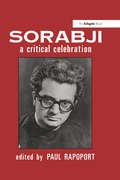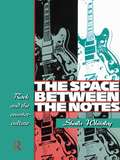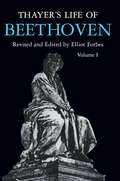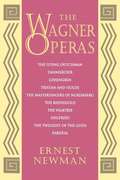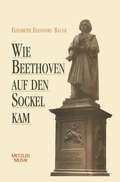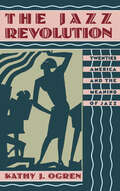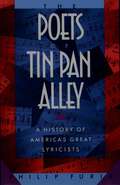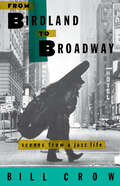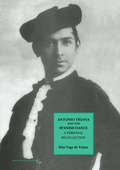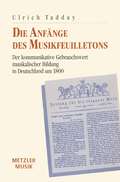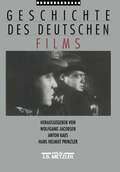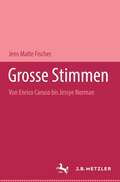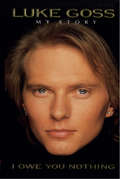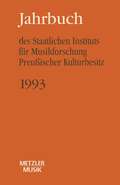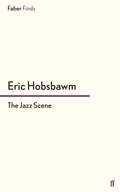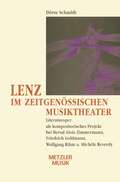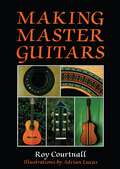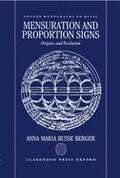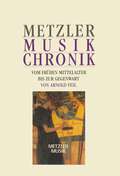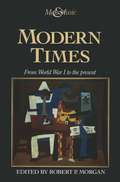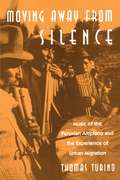- Table View
- List View
Sorabji: A Critical Celebration
by Paul RapoportKaikhosru Shapurji Sorabji (1892-1988) was an unusual legend in his own lifetime: a Parsi composer and critic living in England whose compositions are of such length and difficulty that he felt compelled to ban public performances of them. This book, the first devoted to Sorabji, explores his life and character, his music, his articles and letters. It both presents the legend accurately and dispels its exaggerated aspects. The portrait which emerges is not of a crank or eccentric but of a highly original and accomplished musical thinker whom recent performances and recordings confirm as unique and important. Most of the contributors knew Sorabji personally. They have all written about or performed his music, gaining international recognition for their work. Generous quotation of Sorabji's published and unpublished music and prose assists in bringing him and his work strikingly to life. The book also contains the most complete and accurate register of his work ever published.
Sorabji: A Critical Celebration
by Paul Rapoport Alistair Hinton Frank Holliday Kenneth Derus Nazlin Bhimani Michael Habermann Geoffrey Douglas Madge Marc-André RobergeKaikhosru Shapurji Sorabji (1892-1988) was an unusual legend in his own lifetime: a Parsi composer and critic living in England whose compositions are of such length and difficulty that he felt compelled to ban public performances of them. This book, the first devoted to Sorabji, explores his life and character, his music, his articles and letters. It both presents the legend accurately and dispels its exaggerated aspects. The portrait which emerges is not of a crank or eccentric but of a highly original and accomplished musical thinker whom recent performances and recordings confirm as unique and important. Most of the contributors knew Sorabji personally. They have all written about or performed his music, gaining international recognition for their work. Generous quotation of Sorabji's published and unpublished music and prose assists in bringing him and his work strikingly to life. The book also contains the most complete and accurate register of his work ever published.
The Space Between the Notes: Rock and the Counter-Culture
by Sheila WhiteleyThe Space Between the Notes examines a series of relationships central to sixties counter-culture: psychedelic coding and rock music, the Rolling Stones and Charles Manson, the Beatles and the `Summers of love', Jimi Hendrix and hallucinogenics, Pink Floyd and space rock. Sheila Whiteley combines musicology and socio-cultural analysis to illuminate this terrain, illustrating her argument with key recordings of the time: Cream's She Walks Like a Bearded Rainbow, Hendrix's Hey Joe, Pink Floyd's Set the Controls For the Heat of the Sun, The Move's I Can Hear the Grass Grow, among others.The appropriation of progressive rock by young urban dance bands in the 1990s make this study of sixties and seventies counter-culture a timely intervention. It will inform students of popular music and culture, and spark off recognition and interest from those that lived through the period as well as a new generation that draw inspiration from its iconography and sensibilities today.
The Space Between the Notes: Rock and the Counter-Culture
by Sheila WhiteleyThe Space Between the Notes examines a series of relationships central to sixties counter-culture: psychedelic coding and rock music, the Rolling Stones and Charles Manson, the Beatles and the `Summers of love', Jimi Hendrix and hallucinogenics, Pink Floyd and space rock. Sheila Whiteley combines musicology and socio-cultural analysis to illuminate this terrain, illustrating her argument with key recordings of the time: Cream's She Walks Like a Bearded Rainbow, Hendrix's Hey Joe, Pink Floyd's Set the Controls For the Heat of the Sun, The Move's I Can Hear the Grass Grow, among others.The appropriation of progressive rock by young urban dance bands in the 1990s make this study of sixties and seventies counter-culture a timely intervention. It will inform students of popular music and culture, and spark off recognition and interest from those that lived through the period as well as a new generation that draw inspiration from its iconography and sensibilities today.
Thayer's Life of Beethoven, Part I
by Elliot ForbesThe book description for the previously published "Thayer's Life of Beethoven" is not yet available.
The Wagner Operas
by Ernest NewmanIn this classic guide, the foremost Wagner expert of our century discusses ten of Wagner's most beloved operas, illuminates their key themes and the myths and literary sources behind the librettos, and demonstrates how the composer's style changed from work to work. Acclaimed as the most complete and intellectually satisfying analysis of the Wagner operas, the book has met with unreserved enthusiasm from specialist and casual music lover alike. Here, available for the first time in a single paperback volume, is the perfect companion for listening to, or attending, The Flying Dutchman, Tannhäuser, Lohengrin, Tristan and Isolde, Die Meistersinger, the four operas of the Ring Cycle, and Parsifal. Newman enriches his treatment of the stories, texts, and music of the operas with biographical and historical materials from the store of knowledge that he acquired while completing his numerous books on Wagner, including the magisterial Life of Richard Wagner. The text of The Wagner Operas is filled with hundreds of musical examples from the scores, and all the important leitmotifs and their interrelationships are made clear in Newman's lucid prose. "This is as fine an introduction as any ever written about a major composer's masterpieces. Newman outlines with unfailing clarity and astuteness each opera's dramatic sources, and he takes the student through the completed opera, step by step, with all manner of incidental insight along the way."--Robert Bailey, New York University
Wie Beethoven auf den Sockel kam: Die Entstehung eines musikalischen Mythos
by Elisabeth Eleonore BauerThe Jazz Revolution: Twenties America and the Meaning of Jazz
by Kathy J. OgrenBorn of African rhythms, the spiritual "call and response," and other American musical traditions, jazz was by the 1920s the dominant influence on this country's popular music. Writers of the Harlem Renaissance (Langston Hughes, Claude McKay, Zora Neale Hurston) and the "Lost Generation" (Malcolm Cowley, F. Scott Fitzgerald, and Gertrude Stein), along with many other Americans celebrated it--both as an expression of black culture and as a symbol of rebellion against American society. But an equal number railed against it. Whites were shocked by its raw emotion and sexuality, and blacks considered it "devil's music" and criticized it for casting a negative light on the black community. In this illuminating work, Kathy Ogren places this controversy in the social and cultural context of 1920s America and sheds new light on jazz's impact on the nation as she traces its dissemination from the honky-tonks of New Orleans, New York, and Chicago, to the clubs and cabarets of such places as Kansas City and Los Angeles, and further to the airwaves. Ogren argues that certain characteristics of jazz, notably the participatory nature of the music, its unusual rhythms and emphasis, gave it a special resonance for a society undergoing rapid change. Those who resisted the changes criticized the new music; those who accepted them embraced jazz. In the words of conductor Leopold Stowkowski, "Jazz [had] come to stay because it [was] an expression of the times, of the breathless, energetic, superactive times in which we [were] living, it [was] useless to fight against it." Numerous other factors contributed to the growth of jazz as a popular music during the 1920s. The closing of the Storyville section of New Orleans in 1917 was a signal to many jazz greats to move north and west in search of new homes for their music. Ogren follows them to such places as Chicago, New York, and San Francisco, and, using the musicians' own words as often as possible, tells of their experiences in the clubs and cabarets. Prohibition, ushered in by the Volstead Act of 1919, sent people out in droves to gang-controlled speak-easies, many of which provided jazz entertainment. And the 1920s economic boom, which made music readily available through radio and the phonograph record, created an even larger audience for the new music. But Ogren maintains that jazz itself, through its syncopated beat, improvisation, and blue tonalities, spoke to millions. Based on print media, secondary sources, biographies and autobiographies, and making extensive use of oral histories, The Jazz Revolution offers provocative insights into both early jazz and American culture.
The Poets of Tin Pan Alley: A History of America's Great Lyricists
by Philip FuriaFrom the turn of the century to the 1960s, the songwriters of Tin Pan Alley dominated American music. Irving Berlin, Cole Porter, George and Ira Gershwin, Rodgers and Hart--even today these giants remain household names, their musicals regularly revived, their methods and styles analyzed and imitated, and their songs the bedrock of jazz and cabaret. In The Poets of Tin Pan Alley Philip Furia offers a unique new perspective on these great songwriters, showing how their poetic lyrics were as important as their brilliant music in shaping a golden age of American popular song. Furia writes with great perception and understanding as he explores the deft rhymes, inventive imagery, and witty solutions these songwriters used to breathe new life into rigidly established genres. He devotes full chapters to all the greats, including Irving Berlin, Lorenz Hart, Ira Gershwin, Cole Porter, Oscar Hammerstain II, Howard Dietz, E.Y. Harburg, Dorothy Fields, Leo Robin, and Johnny Mercer. Furia also offers a comprehensive survey of other lyricists who wrote for the sheet-music industry, Broadway, Hollywood, and Harlem nightclub revues. This was the era that produced The New Yorker, Don Marquis, Dorothy Parker, and E.B. White--and Furia places the lyrics firmly in this fascinating historical context. In these pages, the lyrics emerge as an important element of American modernism, as the lyricists, like the great modernist poets, took the American vernacular and made it sing.
From Birdland to Broadway: Scenes from a Jazz Life
by Bill CrowIn the 1950s, New York City's Birdland was the center of the world of modern jazz--and a revelation to Bill Crow, a wet-behind-the-ears twenty-two-year-old from Washington State. Located on Broadway between 52nd and 53rd streets, the club named for the incomparable Charlie "Bird" Parker boasted lifesize photo murals of modern jazzmen like Dizzy Gillespie, Lennie Tristano, and, of course, Bird himself, looming large against jet black walls. Exotic live birds perched in cages behind the bar. The midget master of ceremonies, 3'9" Pee Wee Marquette, dressed in a zoot suit and loud tie, smoked huge cigars and screeched mispronounced introductions into the microphone. And the jazz-struck young Crow would park in the bleachers till 4 am, blissfully enveloped by the heady music of Bird, Bud Powell, Max Roach, and a host of other jazz giants. From Birdland to Broadway is an enthralling insider's account of four decades of a life in jazz. Bill Crow, journeyman bass player, superb storyteller, and author of the successful Jazz Anecdotes, here narrates many moving and delightful tales of the pioneers of modern jazz he played with and was befriended by. We find Dizzy Gillespie, with whom Crow, because of prior commitments, regretfully declined steady work, dancing at the Royal Roost, Stan Getz sadly teetering on the brink of losing himself to drugs, and Harry Belafonte (known then as "the Cinderella Gentleman") running a lunch counter in New York's Sheridan Square between music dates. And we also witness many of the highlights of Crow's career, such as in 1955 when the Marian McPartland Trio (with Crow on bass) was named "Small Group of the Year" by Metronome; Crow playing with the Gerry Mulligan Quartet at venues like Storyville in Boston and Harlem's Apollo Theater (where they appeared with Dinah Washington); and the tour of the Soviet Union with Benny Goodman, a journey that might have been a high point of Crow's travels abroad but was marred by Goodman's legendary mistreatment of his band. Moving beyond jazz clubs to the Broadway concert pit and a variety of studio gigs in the '60s, Crow encounters actors such as Yul Brynner and pop-rock acts like Simon and Garfunkel. From the great to the near-great, from Billie Holiday to Judy Holliday, Bill Crow's wealth of personal anecdotes takes the reader from Birdland, to the Half Note, to the Playboy Club, to the footlights of Broadway. This revealing book is a marvelous portrait of the jazz world, told by someone who's been there.
Antonio Triana and the Spanish Dance: A Personal Recollection (Choreography and Dance Studies Series)
by Rita Vega de TrianaThis book also traces the evolution of the Spanish Dance technique, marked as it is by a turbulent history. Antonio Triana was a dancer of mature artistry, dignity and power. His physical and technical achievements went beyond what is generally known about Spanish Dance. His dance presented the essence of the Spanish character and, in his choreography, he used his traditional background for his brilliant inspirations. He partnered the legendary La Argentinita, Pilar Lopez and Carmen Amaya with spirit and gallantry. Over the years he developed a very distinct method of teaching and he became one of the foremost Spanish Flamenco dancers and teachers of his time. Rita Vega de Triana formed the Triana Ballet Español with her late husband. She currently teaches Hispanic dance and related subjects at the University of Texas at El Paso and directs her own school as well as performing around the United States as a guest artist and choreographer.
Antonio Triana and the Spanish Dance: A Personal Recollection (Choreography and Dance Studies Series #Vol. 6)
by Rita Vega de TrianaThis book also traces the evolution of the Spanish Dance technique, marked as it is by a turbulent history. Antonio Triana was a dancer of mature artistry, dignity and power. His physical and technical achievements went beyond what is generally known about Spanish Dance. His dance presented the essence of the Spanish character and, in his choreography, he used his traditional background for his brilliant inspirations. He partnered the legendary La Argentinita, Pilar Lopez and Carmen Amaya with spirit and gallantry. Over the years he developed a very distinct method of teaching and he became one of the foremost Spanish Flamenco dancers and teachers of his time. Rita Vega de Triana formed the Triana Ballet Español with her late husband. She currently teaches Hispanic dance and related subjects at the University of Texas at El Paso and directs her own school as well as performing around the United States as a guest artist and choreographer.
Die Anfänge des Musikfeuilletons: Der kommunikative Gebrauchswert musikalischer Bildung in Deutschland um 1800
by Ulrich TaddayI Owe You Nothing
by Luke Goss Jean RitcheThe truth behind the spectacular rise and fall of a pop legend in his own words.
The Jazz Scene
by Eric HobsbawmFrom 1955-65 the historian Eric Hobsbawm took the pseudonym 'Francis Newton' and wrote a monthly column for the New Statesman on jazz - music he had loved ever since discovering it as a boy in 1933 ('the year Adolf Hitler took power in Germany'). Hobsbawm's column led to his writing a critical history, The Jazz Scene (1959). This enhanced edition from 1993 adds later writings by Hobsbawm in which he meditates further 'on why jazz is not only a marvellous noise but a central concern for anyone concerned with twentieth-century society and the twentieth-century arts.' 'All the greats are covered in passing (Louis Armstrong, Billie Holiday), while further space is given to Duke Ellington, Ray Charles, Thelonious Monk, Mahalia Jackson, and Sidney Bechet ... Perhaps Hobsbawm's tastiest comments are about the business side and work ethics, where his historian's eye strips the jazz scene down to its commercial spine.' Kirkus Reviews
Lenz im zeitgenössischen Musiktheater: Literaturoper als kompositorisches Projekt bei Bernd Alois Zimmermann, Friedrich Goldmann, Wolfgang Rihm und Michèle Reverdy
by Dörte SchmidtMaking Master Guitars
by Roy CourtnallMaking Master Guitars is a craftsman's handbook about the exciting and challenging pursuit of making classical guitars, a craft that the author reveals to be surprisingly accessible by following his instructions. The book is unique in that it includes nine separate detailed plans of instruments constructed by internationally famous guitar-makers. The author has had the rare opportunity of examining these instruments in detail, and has made many replicas of each one. Superbly illustrated by Adrian Lucas. Part one: The Master Makers and their Guitars is devoted to separate chapters on each famous maker, including Antonio de Torres, Hermann Hauser, Santos Hernandez y Aguado, Ignacio Fleta, Robert Bouchet, Daniel Friederich and Jose Romanillos. The reader will find historical information about the life of and influences on each makers, as well as detailed sets of working drawings for their guitars. Also included are rare photographs of the guitars. Part two: Workshop, Tools and Materials provides essential information about the tools, working environment and material needed by the guitar-maker. Part three: Guitar Construction - The Spanish Method comprises a step-by-step method of guitar construction, illustrated by numerous photographs and drawings. The method of making a guitar is presented with great clarity. So that even the newcomer to this fascinating craft will be able to produce a superb instrument. This book will be essential for the guitar-maker and the historian, providing as it does a unique record of the different methods of guitar design and strutting systems that have evolved since Antonio de Torres first defined the essential characteristics of the modern classical guitar in the 1850s.
Mensuration And Proportion Signs: Origins And Evolution (Oxford Monographs On Music)
by Anna Maria Busse BergerCounter In the fourteenth century composers and theorists invented mensuration and proportion signs that allowed them increased flexibility and precision in notating a wide range of rhythmic and metric relationships. The origin and interpretation of these signs is one of the least understood and most complex issues in music history. This study represents the first attempt to see the origin of musical mensuration and proportion signs in the context of other measuring systems of the fourteenth century. Berger analyzes the exact meaning of every mensuration and proportion sign in music and theory from the fourteenth to the sixteenth century, and offers revisions of many currently-held views concerning the significance and development of early time signatures.
Metzler Musik Chronik: Vom frühen Mittelalter bis zur Gegenwart
by Arnold FeilDie "Metzler Musik Chronik" informiert über 1000 musikalische Werke vom frühen Mittelalter bis zur Gegenwart. Sie gibt Auskunft über eine Vielzahl von Komponisten und charkterisiert deren Werke. Große Aufmerksamkeit wird dabei den einzelnen Werkgeschichten geschenkt. Diese Chronik verbindet die Vorzüge einer Musikgeschichte mit denen eines Werklexikons.
Moving Away from Silence: Music of the Peruvian Altiplano and the Experience of Urban Migration (Chicago Studies in Ethnomusicology)
by Thomas TurinoIncreasingly popular in the United States and Europe, Andean panpipe and flute music draws its vitality from the traditions of rural highland villages and of rural migrants who have settled in Andean cities. In Moving Away from Silence, Thomas Turino describes panpipe and flute traditions in the context of this rural-urban migration and the turbulent politics that have influenced Peruvian society and local identities throughout this century. Turino's ethnography is the first large-scale study to concentrate on the pervasive effects of migration on Andean people and their music. Turino uses the musical traditions of Conima, Peru as a unifying thread, tracing them through the varying lives of Conimeos in different locales. He reveals how music both sustains and creates meaning for a people struggling amid the dramatic social upheavals of contemporary Peru. Moving Away from Silence contains detailed interpretations based on comparative field research of Conimeo musical performance, rehearsals, composition, and festivals in the highlands and Lima. The volume will be of great importance to students of Latin American music and culture as well as ethnomusicological and ethnographic theory and method.
Moving Away from Silence: Music of the Peruvian Altiplano and the Experience of Urban Migration (Chicago Studies in Ethnomusicology)
by Thomas TurinoIncreasingly popular in the United States and Europe, Andean panpipe and flute music draws its vitality from the traditions of rural highland villages and of rural migrants who have settled in Andean cities. In Moving Away from Silence, Thomas Turino describes panpipe and flute traditions in the context of this rural-urban migration and the turbulent politics that have influenced Peruvian society and local identities throughout this century. Turino's ethnography is the first large-scale study to concentrate on the pervasive effects of migration on Andean people and their music. Turino uses the musical traditions of Conima, Peru as a unifying thread, tracing them through the varying lives of Conimeos in different locales. He reveals how music both sustains and creates meaning for a people struggling amid the dramatic social upheavals of contemporary Peru. Moving Away from Silence contains detailed interpretations based on comparative field research of Conimeo musical performance, rehearsals, composition, and festivals in the highlands and Lima. The volume will be of great importance to students of Latin American music and culture as well as ethnomusicological and ethnographic theory and method.
